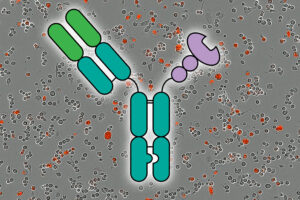
A recent study by a Korean research team has revealed that artificial intelligence (AI) used in mammography missed 14% of invasive breast cancers, a critical type where delayed diagnosis can directly affect patient survival. This finding underscores both the potential and limitations of AI in medical diagnostics.
The research, conducted by experts from the Breast Center at Korea University College of Medicine, analyzed 1,097 breast cancer cases diagnosed between 2014 and 2020. Using a commercially available Korean AI program, Lunit Insight MMG, the study highlighted significant nuances in AI’s diagnostic capabilities, especially concerning invasive breast cancers.
Understanding Breast Cancer and AI’s Role
Breast cancer is categorized into ductal carcinoma in situ (stage 0) and invasive cancer (stages 1–4). While previous studies have estimated the overall false-negative rate of AI-assisted mammography for all breast cancers at about 19.4%, the performance of AI in detecting invasive cancers has remained a pressing question.
The research team, led by Professor Sungeun Song from Korea University Anam Hospital and Professor Okhee Woo from Korea University Guro Hospital, aimed to address this gap by focusing specifically on invasive cancer cases. Their findings indicate that AI missed 17.2% of luminal-type cancers, 14.5% of triple-negative cancers, and 9% of HER2-positive cancers.
Factors Contributing to Missed Diagnoses
Missed invasive cancers were more common in younger women and those with tumors 2 cm or smaller. These cases typically exhibited lower histologic grade, fewer lymph node metastases, low Ki-67 expression, and were often located outside glandular areas, frequently falling into BI-RADS category 4.
Dense breast tissue, non-glandular tumor location, structural distortion, and microcalcifications were identified as the most common reasons for missed detection. Notably, 61.7% of these cancers were considered detectable by radiologists, highlighting the importance of human oversight in AI-assisted diagnostics.
Expert Opinions and Future Directions
“While AI shows strong performance in detecting breast cancer, our findings highlight the need for continuous oversight and complementary work by radiologists,” said Professor Song. “Knowing the features of invasive cancers that AI tends to miss will be key to improving both clinical use and future development of AI tools.”
The study, titled “Invasive Breast Cancers Missed by AI Screening of Mammograms,” has been published in the journal Radiology, which boasts an impact factor of 15.4, underscoring the significance of these findings in the medical community.
Historical Context and Technological Evolution
The use of AI in medical imaging is not new, but its rapid development over recent years has sparked both excitement and caution. Historically, radiologists have relied on traditional imaging techniques, but AI promises to enhance accuracy and efficiency. However, as this study demonstrates, AI is not infallible and must be used in conjunction with human expertise.
Previous advancements in AI have shown promise in various medical fields, yet the need for rigorous testing and validation remains paramount. The balance between AI and human oversight continues to evolve, with ongoing research crucial to refining AI tools for better patient outcomes.
Implications and Looking Ahead
The implications of this study are significant for the future of AI in healthcare. As AI technology continues to evolve, understanding its limitations will be essential in ensuring it serves as a reliable aid rather than a standalone solution.
Moving forward, researchers and developers are likely to focus on enhancing AI algorithms to better detect the subtle features of invasive cancers. Collaborative efforts between technologists and medical professionals will be vital to achieving these goals.
As AI becomes increasingly integrated into healthcare, the lessons learned from studies like this one will guide the development of more sophisticated and accurate diagnostic tools, ultimately improving patient care and outcomes.




